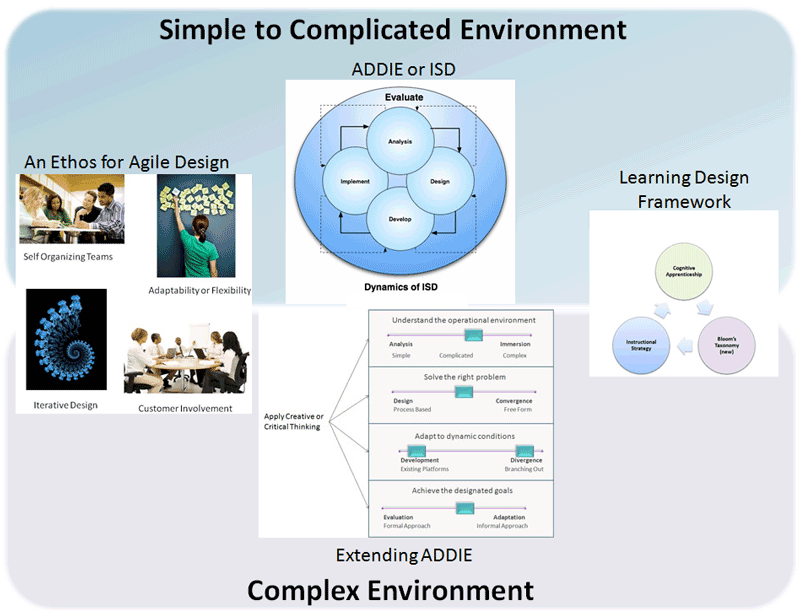Note: This site is moving to KnowledgeJump.com. Please reset your bookmark.
Instructional Design — mLearning
The term mlearning is short for “mobile learning.” It basically means elearning through a mobile device, such as a mp3 player (iPod), smart cellphone portable computer, or iPad. This means the learners do not have to be in a fixed, predetermined location.
mLearning has been defined as any activity that allows individuals to be more productive when consuming, interacting with, or creating information, mediated through a compact digital device that the individual carries on a regular basis, has reliable connectivity, nd fits in a pocket or purse (eLearning Guild, 2007).
Metcalf (2006) notes that mLearning combines the technologies of mobile computing with elearning and may be defined as any form of electronically delivered instruction material with an emphasis on Internet or wireless based technologies.
As noted in the above definitions, mlearning is mostly thought to be associated with a mobile device being connected to the Internet. mLearning relies on a device with anywhere, anytime wireless access and that it is based on these concepts Rosen (2010):
- Information is available anywhere there is Internet access
- Information is available anytime
- Information is available through devices that are becoming commonplace and will soon be affordable to most people.
- Information can be pushed from the environment to the learners and pulled by the learners from the environment
- The learning environment is fluid and adapts as the learner learns.
While this might seem to exclude the iPod due to its lack of wireless connection with the Internet, most writings include it because it can capture information from the internet by using a secondary device (personal computer) and its small size makes it an extremely portable mobile learning device, especially for podcasts. For more information see, Learning for iPods.
mLearning was first intended to deliver formal learning, such as sideshows or information; but with the rise of blogging and microblogging apps (such as Twitter or Yammer), it is now largely thought as an aid to informal learning (Pachler, Bachmair, Cook, 2009). That is, rather than delivering full courses, mlearning is more about performance support and complimenting learning (Clark, 2011).
This differs from dL (distance Learning) in that dL is mostly concerned with formal learning.
One of mlearning's most interesting abilities is being able to shift learning across both time and space. For example, if all your perspective learners reside at company headquarters, then classroom training normally becomes easy to coordinate because of such scheduling programs as MS Outlook. If time is critical, such as the learners having different times that they need to learn something, then elearning becomes a consideration.
But if the learners are scattered across the country (such as salespersons) and time dictates the best time and place for them to learn, then mlearning might be a consideration. Of course just like anything else, it does have its certain limitations, mostly the small screen found on such portable devices. Thus while mlearning will never replace the classrooms or elearning, it is a good tool to consider when you have to shift the learning among places and time.
Its main strengths are that mobile devices are becoming quite ubiquitous and pervade across several generations of learners as a primary choice of communication, especially the younger generation.
Thus, mLearning also differs from dL in that while dL may place the students and instructors in the same time (synchronous learning), mlearning is normally performed asynchronously.
Note in this short video how mlearning ties in with social learning and social media.
Semour Papert said something to the effect that anything is easy if you can assimilate it to your collection of models. Thus one mental model is a small screen and/ or audio device that allows short bursts of learning, normally three to ten minutes in length. Due to its small size, chunking the material into small bites of learning seems to be the best option. If a learning episode is going to be much longer than these recommended chunks, then a more effective platform might be elearning or classroom training.
While learning used to be measured in hours or days, these smaller chunks of learning are now being measured in minutes (Stawarski, Gadd, 2010). This is largely due to the massive amounts of information that we are now consuming or learning just-in-time to complete our daily tasks.
Reference
Quinn, C.N. (2011). Designing mLearning: Tapping into the Mobile Revolution for Organizational Performance. San Francisco: Pfeiffer.
eLearning Guide (2007). 360 Mobile Learning Research Report. Santa Rosa, CA.
Metcalf, D. (2006). M-Learning: Mobile E-Learning. Amherst, MA: HRD Press, Inc
Pachler, N., Bachmair, B., Cook, J. (2009). Mobile Learning: Structures, Agency, Practices. New York: Springer.
Rosen, L.D. (2010). Understanding the iGeneration and the Way They Learn. New York: Palgrave Macmillan.
Stawarski, C.A., Gadd, R. (2010). Evaluating mLearning. In ASTD Handbook for Measuring and Evaluating Training. Phillips, P.P. (ed). Danvers, MA: ASTD Press.



